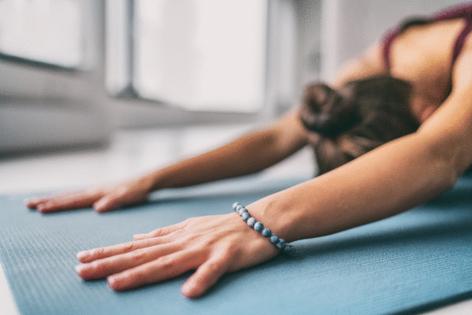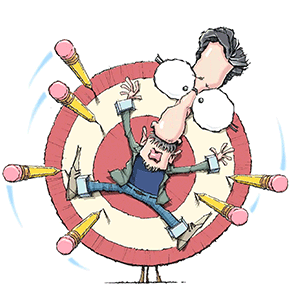How much and how often should people stretch? Experts say there's no one answer
Published in Mom's Advice
The evidence surrounding physical activity is clear: It's critical to good health, helping to ward off obesity, diabetes, heart disease, stroke and even dementia. Federal guidelines recommend at least 150 minutes of moderate-intensity activity each week, but stress that any movement is better than none at all.
What's less clear is what needs to happen before – and after – all that movement. Should people be stretching? And if so, how much?
"The question is very controversial," said Dr. Kelley Gabriel, associate dean for research at the University of Alabama at Birmingham School of Public Health and a professor in the department of epidemiology. "We can't agree on this because there are so many kinds of stretching, and the reasons people stretch are so different. It's very hard to measure or study its effectiveness."
While studies have shown stretching increases range of motion, making it easier for people to move their bodies, there's no scientific consensus on whether this improves athletic performance or prevents injuries.
There's also limited evidence that not stretching before working out is harmful for the average person, said Dr. Gary Liguori, senior editor of the American College of Sports Medicine's 2021 exercise guidelines. Liguori is chancellor and dean of Penn State Abington in Pennsylvania.
"From an acute danger standpoint, there's very little risk," said Liguori, who also is a professor in kinesiology. "Most people don't exercise aggressively, so their risk of muscle injury is minimal."
It really comes down to personal preference, Gabriel said. "It's not necessarily beneficial, but we don't think there's any harm in doing it, either."
However, never stretching – whether you exercise or not – can lead to decreased range of motion over time, especially if a person is sedentary or doesn't engage in a variety of physical activities, Liguori said.
"People who walk most days and that's all they do, they're not going to gain any shoulder or hip flexibility doing that," he said. "They could lose their range of motion even if they hit 150 minutes or more of physical activity every week. For older people, that can create challenges to living independently."
Liguori said the ACSM guidelines focus on maintaining flexibility. They encourage people to stretch at least two or three times per week but emphasize that daily stretching is preferable. Movements to increase flexibility in each major muscle group are recommended.
There are right and wrong ways to stretch, Liguori said.
"Many people think of stretching as bending down and touching their toes and counting to 10," he said. "But that puts strain on the lower back."
Stretches that require twisting the body back and forth (or rapidly) also should be avoided, Liguori said. These, too, can harm the lower back. Any movements with rotating the body should be performed slowly.
Likewise, Gabriel cautioned against bouncing up and down while holding a stretch. "If the purpose is to increase range of motion, it's better to move the body slowly within the range for that joint, as opposed to popping up and down."
Liguori said to think of stretching more from a functional standpoint. "Does the movement give you the flexibility to help do your daily tasks or maintain independent living, such as reaching overhead to get something off of a shelf?"
One way for people to gain that type of flexibility would be to "stand in a doorway and slowly climb their hand up the doorframe," he said. "Each day, go a little higher and hold it there."
The ACSM guidelines suggest most adults hold a stretch for 10 to 30 seconds and that older adults hold the stretch for up to a full minute for greater flexibility.
Gabriel suggested people watch videos of stretches they are unfamiliar with to be sure they are doing them correctly and do them in front of a mirror when trying something new. And, she said, always stop if a movement causes pain or doesn't feel right.
"If you get to a point of pain, you should scale back," she said. "Don't put a joint into a range of motion it's not accustomed to. If you do it improperly, you could hurt yourself."
While there's no evidence that stretching offers any heart-health benefits the way physical activity does, there's a difference between stretching and warming up the body to prepare for intense exertion, Liguori said. Warmup exercises increase blood flow, which may reduce the risk of cardiovascular problems that can be caused by sudden strenuous exertion.
Liguori said this can be done through movements that "mimic the activity you want to engage in" but at a slower pace. For example, baseball players who need to sprint during a game warm up by jogging slowly then gradually increasing speed. "It prepares them to be explosive when game time comes," he said.
Similarly, the average person might warm up before tasks such as shoveling snow, which involve sudden bursts of exertion, Liguori said. "One of the reasons people have heart attacks when they shovel snow is that they don't warm up first."
A good way to maintain flexibility overall is by practicing yoga or doing Pilates, he said. "These exercises really encourage you to move through a lot of positions, which provides a variety of range of motion."
In addition to flexibility, yoga provides other benefits, Gabriel said. Studies have shown it helps older adults maintain mobility, balance and independence and may have neurological and cognitive benefits as people age.
Even people who have been sedentary for a long time and may have lost range of motion can gain at least some of it back through proper stretching, Liguori said. "Your body can bounce back. It may take a while, but day by day, you will see an improvement."
____
American Heart Association News covers heart and brain health. Not all views expressed in this story reflect the official position of the American Heart Association. Copyright is owned or held by the American Heart Association, Inc., and all rights are reserved.










Comments